CBLAST Hurricane Float Deployment
Welcome to the CBLAST Hurricane Float Deployment and Information Site.
Nine specialized oceanographic instruments designed and built at Scripps Institution of Oceanography were air deployed 24 hours in advance of Hurricane Frances using C130J aircraft flown by the Air Force Reserve 53rd Weather Reconnaissance Squadron (better known as the Hurricane Hunters). The instruments are designed to profile the upper 200m of the ocean every 4 hours with specialized sensors during extreme weather events. The success of these instruments leverages Scripps developed expertise from building and deploying hundreds of similar profiling instruments that are designed to operate in the upper 2000m of the ocean for global climate studies.
All 9 CBLAST hurricane floats successfully survived their air deployment, and operated through Hurricane Frances which was at the time a category 4 storm (surface winds ranging from 131-155 mph). The floats continue to operate and report back their position along with information regarding the ocean's temperature and salinity. Additional sensors for measuring the ocean surface waves, dissolved gases, and the underwater sound field internally record their data. A cruise is scheduled between September 25 - October 12 on an oceanographic research vessel to recover the instruments.
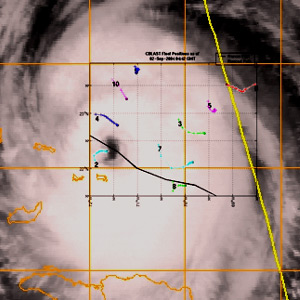
Above: CBLAST Float Positions during Hurricane Frances
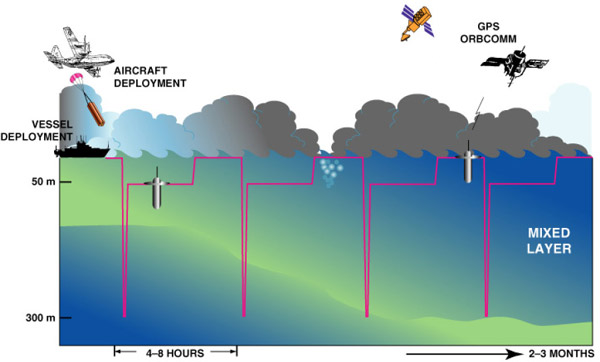
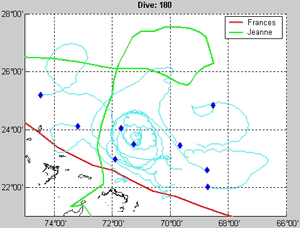
Above: Image still taken from a video rendering of
float trajectories after Hurricane Frances and Jeanne.
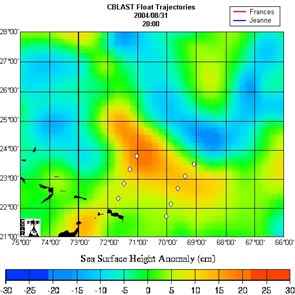
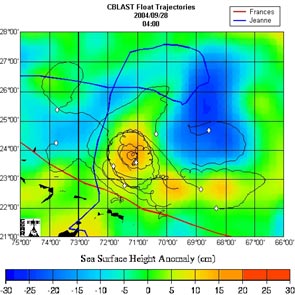
Above: Correspondence of sea surface height anomalies with float trajectories.
The initial deployment array is shown on the left and trajectories near the
end of the experiment are shown on the right.
Blended altimetry provided by the Colorado Center for Astrodynamics Research at the University of Colorado, Boulder.
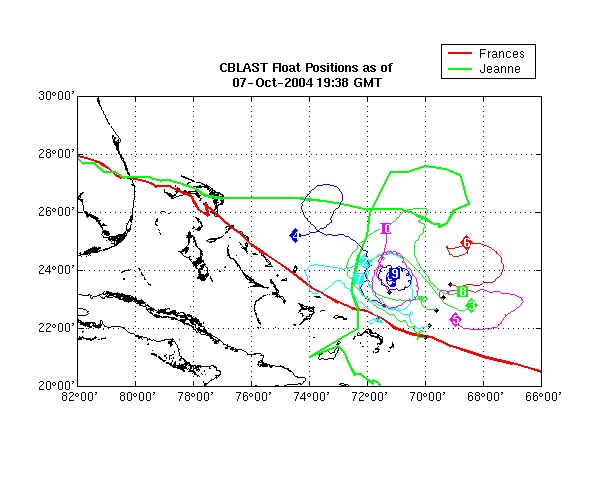
Above: All CBLAST floats' positions after hurricane Frances and Jeanne - Wide View
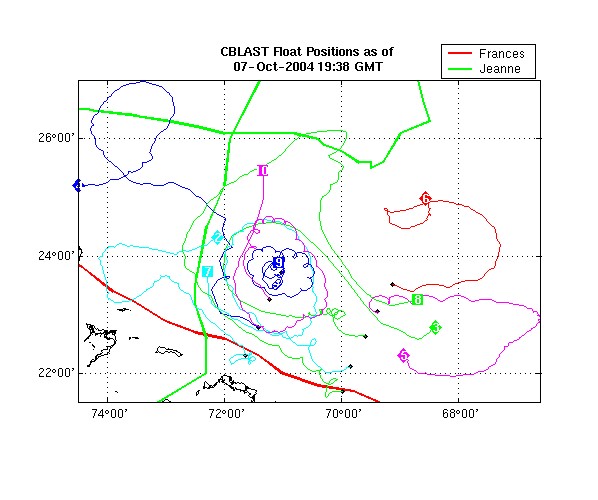
Above: All CBLAST floats' positions after hurricane Frances and Jeanne
We wish to acknowledge the support of the Office of Naval Research, the NOAA Hurricane Research Division, the National Hurricane Center, and the Air Force Reserve Hurricane Hunters.
Disclaimer: WARNING: These real-time ocean current measurements are experimental and have not undergone any error-checking or quality assurance efforts. While considerable effort has gone into ensuring the highest quality data, significant differences between measured currents and actual currents can occur. This information should not be used to make any navigational or other decisions that might endanger public safety or put anyone at significant risk. These are not official data products of the University of California. We reserve the right to ADD, CHANGE or DELETE any product WITHOUT PRIOR NOTICE.
 Projects
Projects
 CBLAST Hurricane Solo Float Deployment Page
CBLAST Hurricane Solo Float Deployment Page